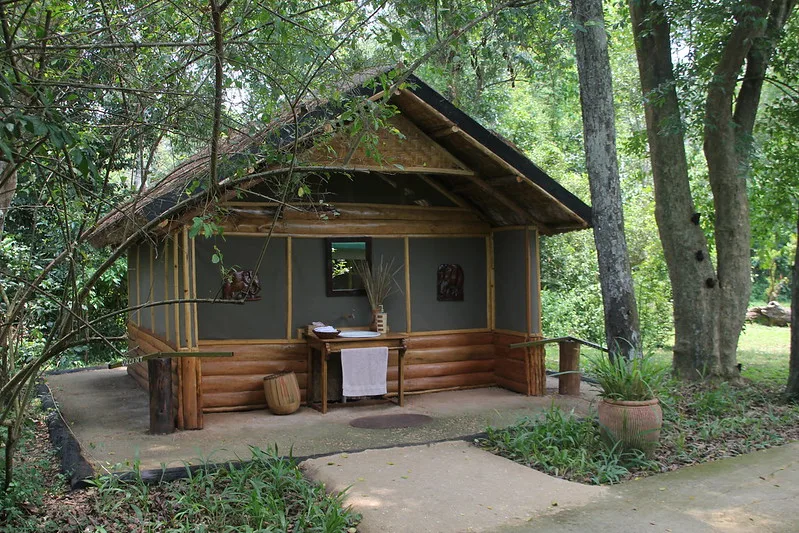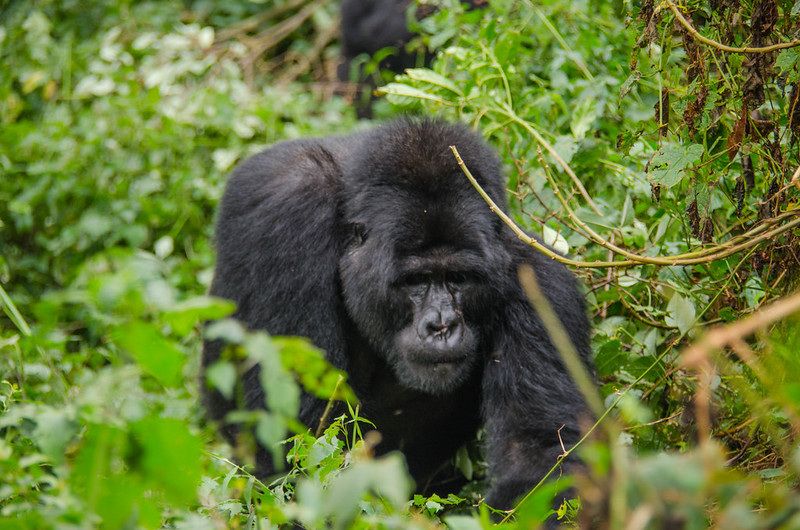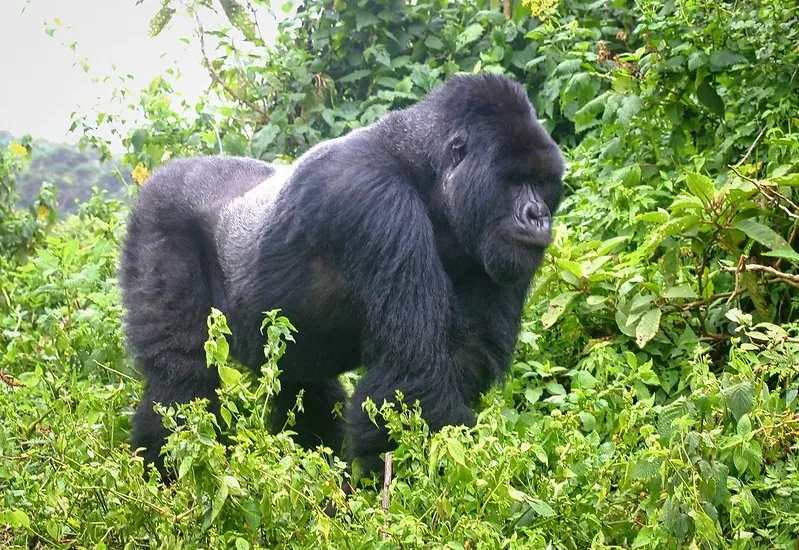Vous êtes bienvenus, aventuriers courageux, dans les merveilles sauvages de l'Ouganda, où l'appel de la…
Reptiles discovered in Uganda
Reptiles discovered in Uganda
Uganda is home to a variety of fascinating reptiles.
The reptiles found in Uganda- in this content, you will discover information, background, national parks, and wildlife reserves where you will be able to see a variety of reptiles found in Uganda, such as lizards, Nile crocodiles, tortoises, terrapins, and chameleons.
Uganda’s most common snakes
Uganda, also known as the Pearl of Africa, is diversified and has a lot to see and do, but it’s poorly known and only a few have experienced the flavor of Uganda. Uganda contains a variety of snakes, some of which are poisonous and others that are not.
The fact is that Ugandan snakes are timid, and if they hear a yell or something moving toward them, they will try to find safer areas to hide away from danger, and they will only attack if they can’t hide any longer or if they are provoked. During your travels to various destinations, you will very probably witness some of them, most notably the python, and others crossing the road in front of your vehicle.
The Puff Adder: one of the most frequent snakes in Uganda, they are located in the Savannah parks, they are friendly to humans but deadly when threatened, and they will attack you. It’s typically seen by safari tourists, and if you’re on a safari in various savannah areas and they prefer eating rodents, you could see it.
Gabon Viper: The largest of all African snakes, measuring up to 2 meters long, with a robust frame and a black and brown skin pattern with occasional gold spots. Its color scheme is ideal for concealment in Uganda’s tropical jungle.
Uganda is more than you can think; if you’re interested in experiencing Uganda’s reptiles, go on a safari with adventure in the wild safaris; you’ll adore every minute you spend with us.
The Rock Python is Africa’s biggest snake, measuring more than 5 meters in length. It has gold on black mottled skin. This snake is not poisonous, but it kills its food by strangling it and wrapping its body around it before swallowing it whole. After that, they will take a deep snooze for up to two months.
They eat tiny antelopes, and huge rodents, and may even murder and swallow little children. You may not see them on your safari, but the best site to discover them is the bat cave in Maramagambo woodland in Queen Elizabeth National Park.
Black Mambas: they are very venomous and pose a significant threat to people, having been known to have killed numerous communities; they move quicker than humans and may hit a person when assaulted. They are not black in color, as the name implies, but the inside of the mouth is. They are most commonly seen in Eastern Uganda.
Green Mambas: These are most commonly seen on trees; they do not move on the ground and may be found on house roofs, latrines, shrubs, and bushes; they are toxic but not as violent as the black Mamba.
Mole snakes are most commonly seen in Savannah parks; they prey on moles and other rodents and can grow to be 2 meters long.
Egg-Eating Snakes: As the name implies, this snake feeds on eggs, swallowing an entire egg and then regurgitating the eggshell.
Boom Slag: Despite the fact that there have been no severe reports of this snake attacking humans in Uganda, they are quite poisonous despite their non-aggressive behavior, they black-gang, and they are commonly observed on trees.
Uganda Monitor Lizards
In Uganda, you will get the opportunity to see several monitor lizards, including Savannah lizards and water lizards, during game drives and boat cruise safaris on various water bodies in Uganda that provide boat safaris.
Water monitor lizards may also be found in the Kazinga channel in Queen Elizabeth National Park and Murchison Falls National Park, where there is a greater possibility of seeing the monitor lizard along the Nile and across the savannah monitor, which can grow to be 2 meters long. When visiting these national parks, you will have a good chance of seeing monitor lizards.
There is no need to be alarmed if you stumble across one while walking around the park; they are harmless and will not attack you. The monitor lizard, which looks like a crocodile but does not behave like one, raids crocodile nests in quest of eggs.
Ugandan Nile Crocodiles
The Nile crocodiles of Uganda are one of the largest living reptiles in Africa. They are dangerous and can kill and eat people. Despite this, there have been no reports of tourists being attacked by the crocodiles, though there have been reports of locals being attacked by the crocodiles. However, you are on the safe side because you will see them on the boat ride in the Nile at Murchison Falls National Park or on the Kazinga channel boat excursion in Queen Elizabeth National Park, as well as on the beaches of Lake Mburo National Park.
![]()
Nile crocodiles often eat fish and prey on animals that come to drink water. It’s thrilling to observe the crocodiles, so don’t miss the Nile Crocodiles when on the Nile launch cruise or other national parks that provide boat safaris.
Uganda has chameleons.
There are many of these that can be seen in Uganda, but you may not see many of them because of their changing color attitude; they can change color and camouflage to avoid being seen by their potential enemies; they change color according to their mood but not the environment or surroundings; therefore, you must be very careful because you may screen upon feeling it on your head. They are home to various wooded places in Uganda, such as savannah lands in Uganda and forested areas such as Kibale Woodland National Park and Budongo Woodland.
Graceful Chameleon is yellow and green in color, with a white stripe down its sides.
The Giant Chameleon is a large, dark green chameleon with yellow stripes and a small horn. It consumes tiny reptiles and insects.
Flap-Necked Chameleon: This species is most commonly seen in Savannah and woodland regions. It is brilliant and green, measuring about 15 cm long, but it can expand and double in size, becoming tan-brown under certain conditions. One of the amazing reasons why you should go on a reptile safari in the Pearl of Africa.
House Gecko: This lizard species may be found in any house/room; it looks to be plastic, but it is not.
They eat insects and are largely safe for people, with the exception of their saliva, which might cause problems if you leave goods used frequently, such as toothbrushes, out and they lick them.
Terrapins: They are flatter than tortoises and are most typically found on rocks near water. The Nile soft-shelled Terrapin, with its wide flat shell, can grow to be one meter in length in some situations.
The leopard tortoise is the most usually seen. Tortoises may weigh up to 30 kg and have leopard-patterned shells. When you book a safari with us, you will be able to explore Uganda and beyond. Uganda is one of the top African nations for an amazing vacation.
If you go on an Uganda safari, your chances of seeing any of the snakes listed are quite slim, but reptiles you’re almost certain to encounter, especially if you visit any of the national parks, including the Nile crocodile, monitor lizards, chameleons, and the rare turtle.
Don’t miss out on the most thrilling and exciting experience and the opportunity to meet the gentle giants of Bwindi and Mgahinga on trekking gorillas following the reptiles’ tour. Visit the Nile or track chimps in their natural habitat. It’s a once-in-a-lifetime adventure to visit any of Uganda’s wildlife parks, including Uganda safaris, Uganda gorilla safaris, chimp trekking, and primates trekking.
For more information about Uganda safaris, including golden monkey trekking, wildlife safaris, chimp trekking, birdwatching, and adrenaline activities in Jinja near the Nile’s source, please contact us. Contact us at Advantage in the Wild Safaris and we will make the impossible happen for you.


